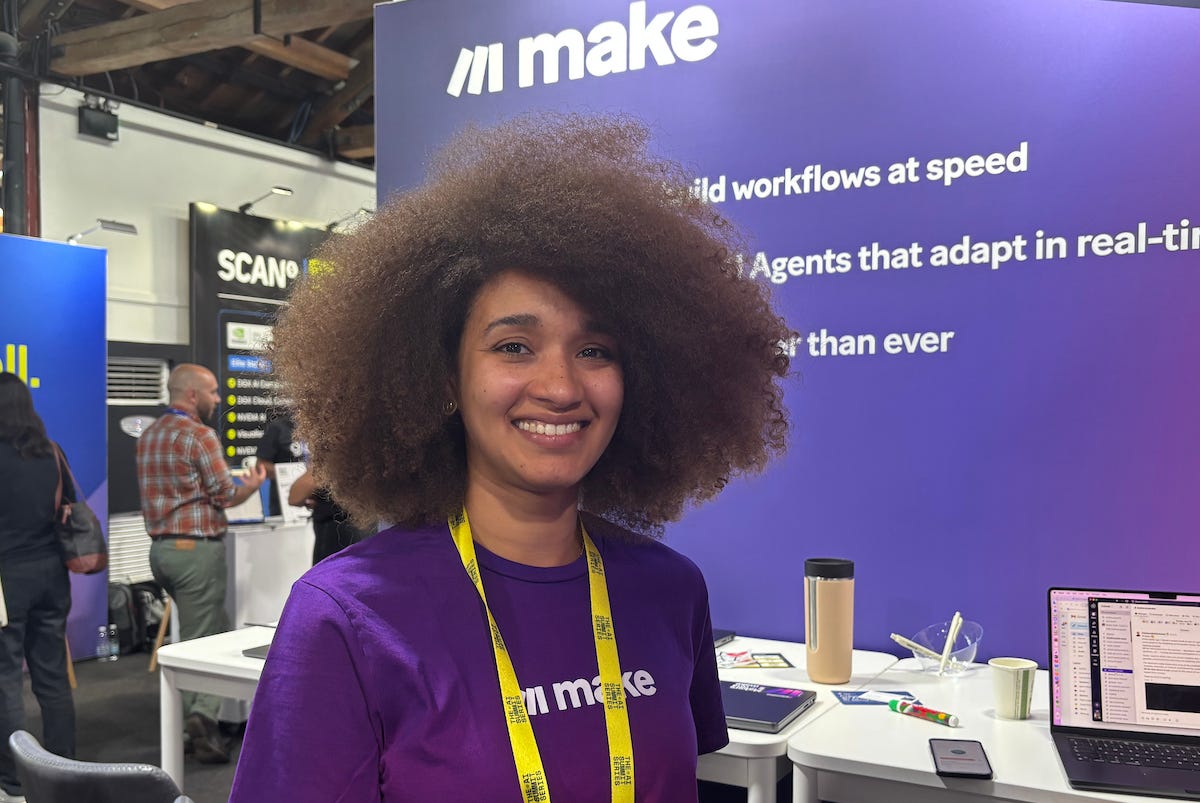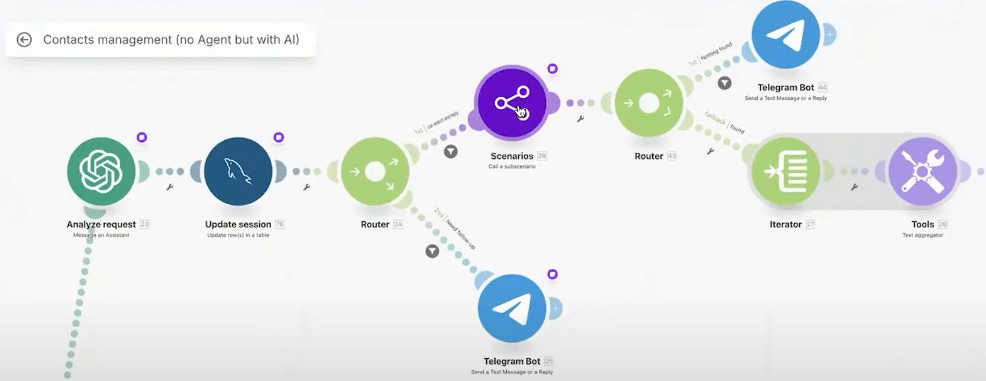Make.com sets sights on AI agent leadership
A leading automation platform outlines plans to expand its AI agent capabilities amid intensifying industry competition
Make.com is setting its sights on a new frontier of artificial intelligence as it accelerates the development of AI agents designed to streamline everyday business tasks.
The platform—already a mainstay for individuals and enterprises seeking low-code automation—is positioning its next generation of AI tools to serve as adaptable digital collaborators capable of interpreting goals and autonomously deciding how to achieve them.
“With Make, we see AI agents as something that you give a goal to, and then it decides how to achieve that goal based on the large language model (LLM) that you would like to use,” Imane Douali, Senior Value Advisor at Make.com, told TechJournal.uk in an interview during the 2025 AI Summit in London.
She said the company’s agents operate by combining LLMs with contextual data and modular tools, and they are not tied to single workflows, allowing them to be reused across multiple processes.
This approach is increasingly significant in a sector that has seen heightened competition from open-source rivals such as n8n, which independent developers widely adopt.
“n8n is also a great company. They were the first ones to do AI agents that you can build yourself,” Douali said, adding that Make recently launched a similar capability to give users more flexibility.
While n8n has focused on empowering individual developers with open-source, visual workflow tools, Make is carving out its niche by emphasizing adaptability and speed of deployment, qualities that resonate with both technical and non-technical users.
She outlined three key building blocks of Make’s AI agent framework: first, the ability to choose any LLM to drive decision-making; second, the capacity to embed relevant contextual documents such as brand guidelines or marketing material; and third, a suite of modular tools—small scenarios or workflows—that the AI agent can execute when it determines they are appropriate.
Douali described this as a deliberate blend of flexibility and structure designed to give users both control and creative freedom.
Building on Celonis' roots
Douali underscored the strategic backing Make receives from its parent company, Celonis. A German software pioneer, Celonis rose to prominence after its founding in 2011 at the Technical University of Munich, developing process mining tools to help enterprises detect inefficiencies and optimize their operations.
Celonis struck a pivotal reseller agreement with SAP in 2015 and has since expanded globally, with headquarters in Munich and New York and a valuation of $13 billion.
She said Make.com currently employs more than 300 people, with its product and engineering teams concentrated at its Prague headquarters. While Make operates independently, she noted that it benefits from the financial strength and customer reach of Celonis, which she described as “a German unicorn in the process mining area.”
Beyond its financial clout, Celonis has become a cornerstone of the process intelligence industry, offering platforms that create digital twins of business processes to identify and eliminate inefficiencies. It partners with some of the world’s largest corporations to help them boost performance across financial, operational, and environmental metrics. It has become a leader in using data-driven insights to cut carbon emissions.
Celonis’ support has provided Make with stability and access to enterprise customers, while allowing it to retain the agility of a standalone venture. This dual structure has been key to Make’s rapid ascent from its 2015 founding to its current position as a platform relied upon by over 350,000 organizations worldwide.
Targeting digitally mature enterprises
Looking ahead, Douali expects the strongest growth to come from organizations that have already embraced digital transformation and are seeking ways to orchestrate increasingly complex workflows.
“The perfect customer for us would be a digitally mature company that has succeeded in their digital transformation and is using a modern tech stack and would like to automate around that tech stack and also include AI into it,” she said.
She noted that many companies with in-house engineering teams are also among Make’s satisfied customers. According to her, these organizations often use Make for rapid prototyping and swift deployment when speed is critical, while relying on full-code approaches for legacy systems or sensitive data.
“For the engineers, they’re smart people. They know when to leverage low-code or no-code, and when to use full code,” Douali explained.
She argued this hybrid appeal—to business users seeking simplicity and to engineers seeking efficiency—has been a cornerstone of Make’s growth strategy. The platform’s visual interface lets users design automation scenarios without heavy coding, while still integrating deeply with enterprise systems when required.
Embracing collaboration, not dominance
Even as major technology players such as Google roll out their own AI agent frameworks, Douali sees expansion rather than contraction ahead. She said Make views the rise of large language model providers as a growth catalyst rather than a threat, adding that the current market remains relatively small but is “getting bigger and bigger in the future.”
She pointed to emerging “agent-to-agent protocols” as evidence that the market is moving toward interoperability rather than monopolization.
“We could have a Google agent, a Salesforce agent, and a Make agent working together, each one in their niche,” she said.
Such collaboration could become a defining feature of the sector as AI agents evolve from isolated tools into interconnected ecosystems.
For Make, the path forward lies in building agents that are not only intelligent but also adaptable partners—ready to operate seamlessly within the diverse digital environments of tomorrow’s enterprises.




